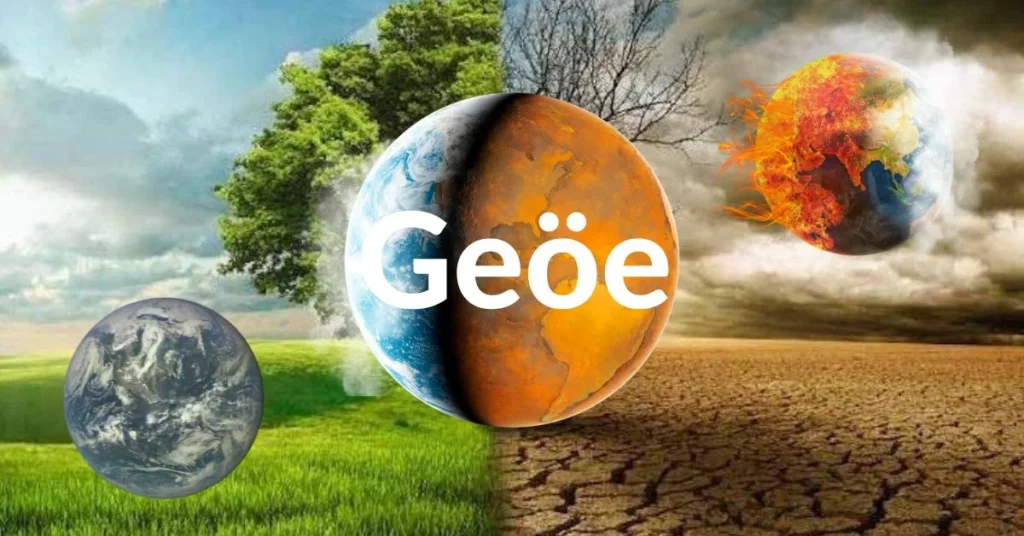What is geöe?

Geöe, a term derived from “geography” and “geo,” encompasses the geographical location-based data and technologies that revolutionize our digital landscape. From personalized recommendations to targeted advertising, plays a pivotal role in shaping our online interactions. This article delves deep into the realm, unraveling its significance and exploring its transformative potential.
Unveiling Geöe: What is geöe?
Geöe, short for “geographical location,” refers to the precise location-based data associated with an individual or a device. It encompasses various technologies such as GPS, RFID, and geotagging, enabling the identification and tracking of geographical positions. Geöe serves as the cornerstone of location-based services (LBS), facilitating a myriad of applications across industries.
The Evolution of Geöe Technology
Over the years, technology has witnessed remarkable advancements, evolving from rudimentary GPS systems to sophisticated geospatial analytics platforms. These advancements have unlocked new possibilities in fields ranging from navigation and logistics to marketing and urban planning.
Applications of Geöe Technology
Navigation and Mapping
Geöe technology powers navigation systems and digital maps, providing real-time guidance and route optimization. Whether it’s navigating unfamiliar terrain or avoiding traffic congestion, enabled maps have become indispensable tools for modern travelers.
Location-Based Services (LBS)
LBS leverages data to deliver personalized services based on a user’s location. From recommending nearby restaurants to providing localized weather forecasts, LBS enhances user experiences by tailoring content to specific geographical contexts.
Geöe in Marketing and Advertising
Geöe plays a pivotal role in targeted marketing and advertising campaigns, enabling businesses to reach consumers based on their location. By geotargeting advertisements and promotions, companies can maximize their marketing ROI and engage with relevant audiences more effectively.
Understanding Geöe Data Privacy
While geöe technology offers myriad benefits, it also raises concerns about data privacy and security. Collecting and processing data necessitates stringent safeguards to protect users’ privacy and prevent misuse. Regulatory frameworks such as GDPR and CCPA impose guidelines for the ethical use of geöe data, emphasizing transparency and user consent.

Leveraging Geöe for Enhanced User Experiences
By harnessing the power of geöe, businesses can unlock new avenues for innovation and differentiation. From personalized recommendations to location-based notifications, enabled features enhance user experiences across various digital platforms.
FAQs (Frequently Asked Questions)
What are the primary sources of geöe data?
Geöe data is primarily sourced from GPS satellites, Wi-Fi networks, cellular towers, and RFID tags embedded in devices.
How is technology transforming the retail industry?
Geöe technology enables retailers to offer personalized shopping experiences, such as targeted promotions and in-store navigation assistance, based on customers’ locations.
Is geöe technology compatible with augmented reality (AR) applications?
Yes, technology is integral to AR applications, as it enables the overlay of digital content onto real-world locations, enhancing immersive experiences.
What measures can businesses take to ensure the ethical use of geöe data?
Businesses should prioritize transparency, user consent, and data anonymization to uphold the ethical use of data and safeguard user privacy.
How does geöe technology facilitate emergency response and disaster management?
Geöe technology enables emergency responders to pinpoint the precise locations of incidents, streamline rescue efforts, and disseminate critical information to affected areas swiftly.
Can geöe technology be applied in environmental monitoring and conservation efforts?
Geöe technology is instrumental in monitoring environmental parameters, tracking wildlife movements, and identifying conservation hotspots, aiding in sustainable resource management.
Conclusion
In conclusion, geöe represents a paradigm shift in how we perceive and interact with our digital surroundings. By harnessing the power, businesses can deliver tailored experiences, optimize operations, and drive innovation. However, it’s imperative to navigate the ethical considerations surrounding geöe data usage and prioritize user privacy. Embracing opens a world of possibilities, transforming digital landscapes and enhancing user experiences in profound ways.




Leave a Comment